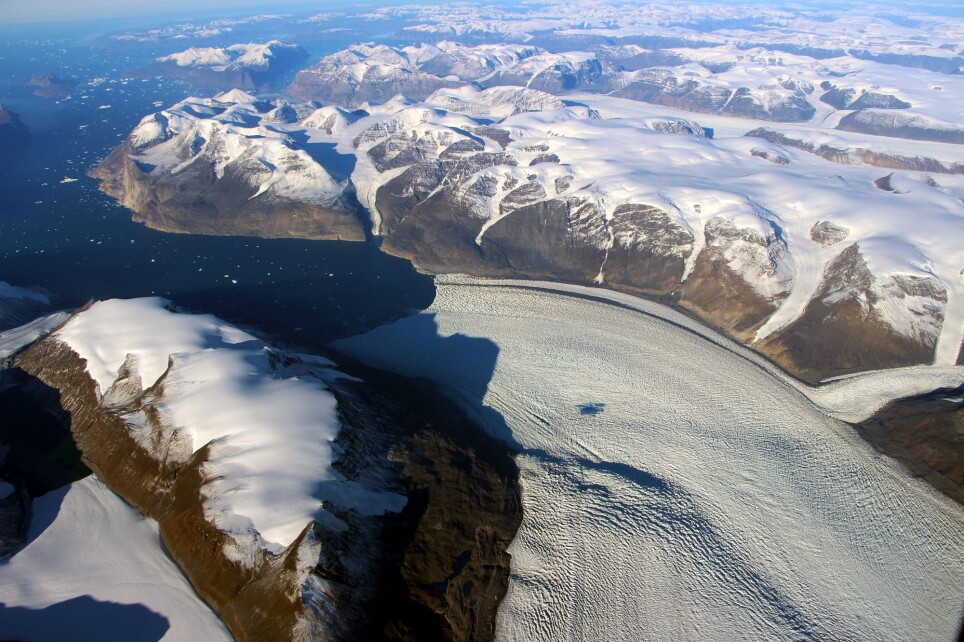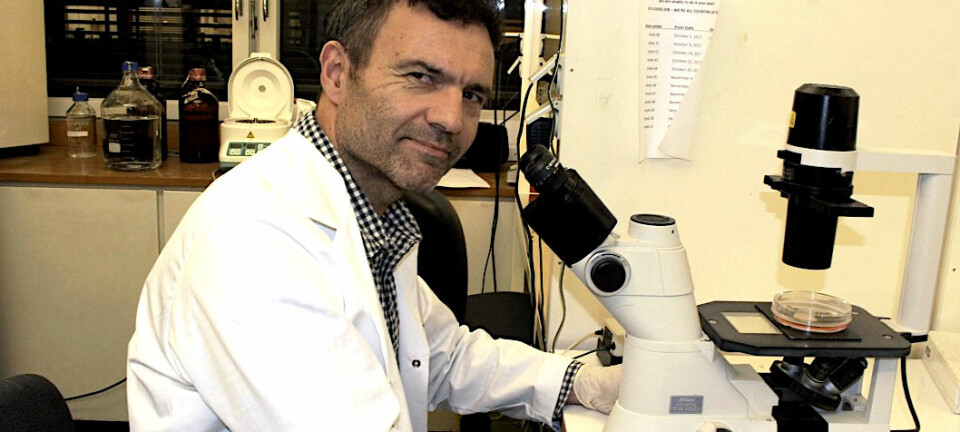This article is produced and financed by University of Oslo - read more

Greenland ice sheet melts faster than earlier predicted
Researchers zoomed in on Greenland to find out how much of the ice cap will melt by the year 2100.
The Greenland ice sheet covers almost all of Greenland and is the second largest ice cap in the world with an area of around 1,7 million square kilometers. Only Antarctica is bigger.
If all the ice on Greenland melts, sea levels would increase by seven meters. Fortunately, we do not have to worry about that horror scenario.
But the ice does melt, and this will contribute to higher sea levels. But until the year 2100, we probably won't need more than a 30 centimeter ruler to measure the increase in sea levels that can be contributed to the Greenland ice.
Stefan Hofer at the Department of Geosciences, University of Oslo and other researchers, have tried to quantify exactly how much the sea levels will rise due to melted Greenland ice. They used the newest climate models.
“We found that the new models are more sensitive to greenhouse gas emissions, so they predict a warmer Greenland than previous models”, Hofer says.
The study is published in Nature Communications.
“The Arctic warms more in the new models and this means that Greenland melts more. How much it melts depends on how much greenhouse gases we will emit in the future”, Hofer says.
Increase from 10 to 18 centimeters
All climate models have scenarios for different levels of greenhouse gas emissions. In this way, the researchers can predict what will happen if emissions decrease a little, much or not at all.
With very high emissions - if everything continues like today - the previous models showed that the melting of the Greenland ice sheet will contribute to the oceans rising by about ten centimeters.
“The new models have 18 centimeters of global sea level rise by 2100”, Hofer says.
For medium-sized emissions, the old models predicted seven centimeters, while the new ones say ten centimeters. For low emissions, the figures are five and eight centimeters.
“The new middle emission scenario will cause the same increase in sea levels as was predicted in the old high emission scenario”, Hofer says.
18 centimeters may not sound very threatening if you don't live on the beach. But for Antarctica, the situation is different.
“Antarctica is ten times the size of Greenland. We see scary numbers if parts of the Antarctic ice sheet collaps. The contribution to global sea level rise could potentially be tenfold ”, Hofer says.
Zoomed in on Greenland
When the Intergovernmental Panel on Climate Change (IPCC) publishes its sixth report in 2022, it will be with new and better models. These models are used in the new study on the Greenland ice sheet.
“The new models have more physics, they have better representation of clouds, they have higher resolution, so they should in theory be more trustworthy”, Hofer says.
The next IPCC report contains 30 climate models. Hofer and his colleagues have used eleven of them. The figures they present are an average of the selected models.
“There are some variations between the eleven models, but the new model with the least amount of melted ice still has more than the old models”, Hofer says.
Although the new models likely are better than the old ones, the global climate models are still not fine-tuned.
Hofer has zoomed in on Greenland to get a better picture of a smaller area.
“I think we are the first research group to use the new models, and make a very high resolution model just with data from Greenland. It’s basically a magnifying glass”, Hofer says.
With this magnifying glass, they bring out details about the surface on Greenland that disappear in the large models.
“You need a higher resolution to describe the areas on the edges because Greenland only melts along the edges”, Hofer says.
Now they want to find out why
So far, the researchers have not found the reasons why the new models melt more ice in Greenland.
“Now we need to find out why. Is it because of clouds? Is it due to ocean currents that are different in the new models? Is it due to the atmospheric pressure systems working in a different way?”
“This is just the starting point”, Hofer says.
Reference:
Stefan Hofer & al: Greater Greenland Ice Sheet contribution to global sea level rise in CMIP6, Nature Communications, December 2020.


































